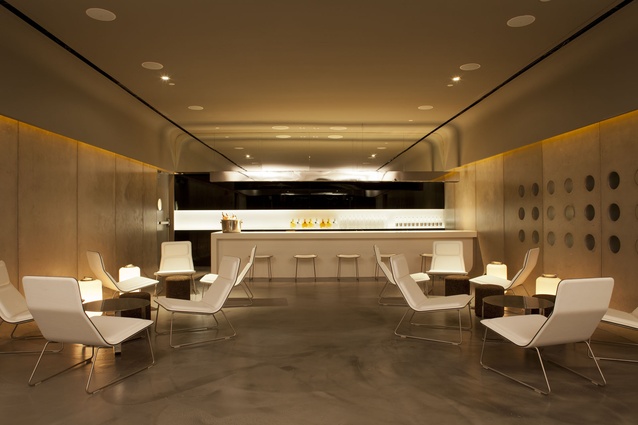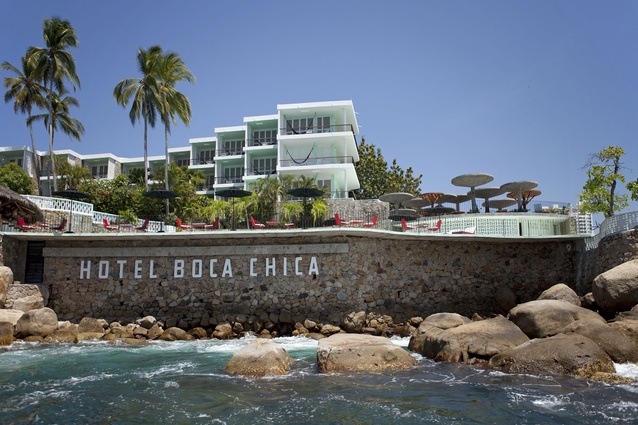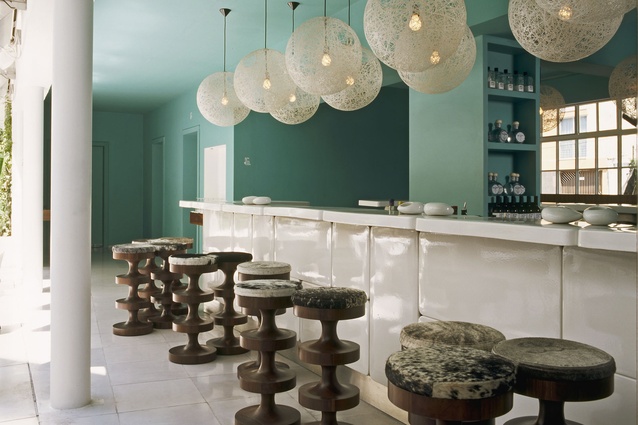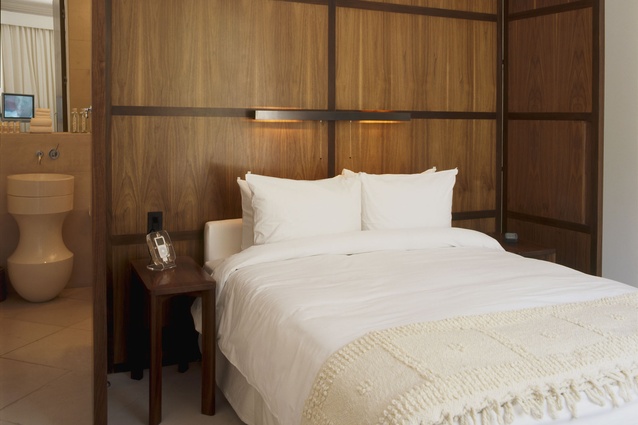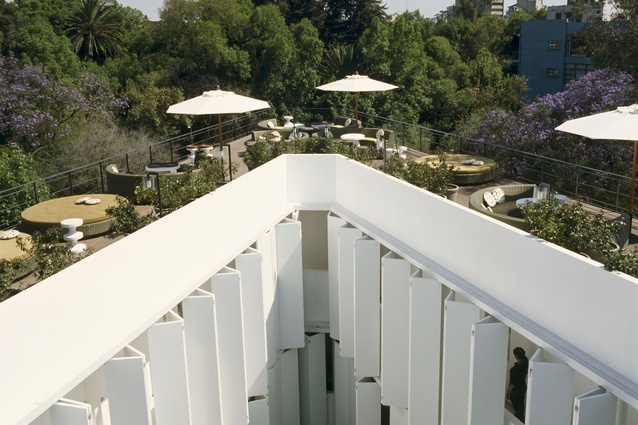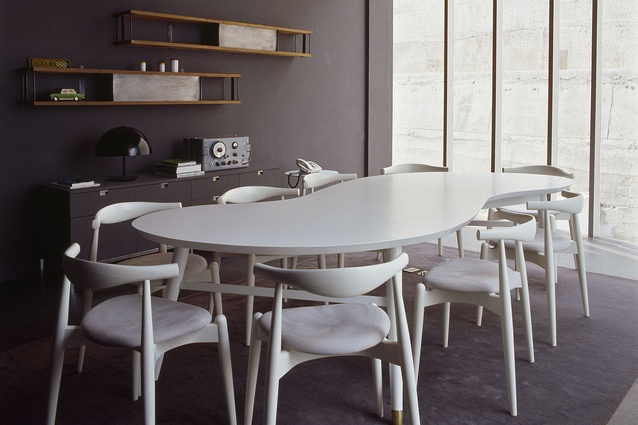Mexican sunrise
Grupo Habita has been quietly reshaping the boutique hotel sector south of the United States border. In its latest apparition, the Mexico City-based developer attempts to take New York. Sam Eichblatt sets out to discover some
of its key design ingredients.
It’s apparent from the moment you walk into one of Grupo Habita’s hotels, that a different approach prevails. There’s not only a more intimate scale than there is in many hotels, but a certain freshness — even the reception is less airport-check-in desk, more friendly neighbourhood clubhouse.
The Mexican hotel group started in 2000 with the Habita, a contemporary design hotel with a deliberately international flavour in the swanky Polanco district of Mexico City, and has since expanded to 13 hotels south of the border — many of them are in areas that weren’t originally seen as visitor destinations but whose creative class has been galvanised by the new arrivals.
Mexico is a country with an incredibly rich artistic heritage. Aesthetically, its points of reference are conspicuously different to those found in Europe or America. For example, Grupo Habita’s Condesa df in Mexico City has a bold wash of aquamarine covering the walls of its inner courtyard. The most obvious comparison is the nearby La Casa Azul — the house painted, inside and out, with a rich, intense cobalt blue where the iconic Mexican artist Frida Kahlo was born and died in 1954.
However, the clean lines, broad, geometric planes of colour and use of raw materials such as wood and stone are also reminiscent of the modernist architect and Pritzker Prize-winner Luis Barragán, whose house and studio, now a UNESCO World Heritage Site, are also nearby.
One of Grupo Habita’s goals was to give shape to a modern vision of Mexico that celebrated this culture, says creative director Carlos Couturier. “In 2000, Mexico City was being transformed silently from an urban chaos into a creative hub, through contemporary art, films and design. Without really being aware of it, we were part of this creative revolution, and contributed to the movement through architecture and interior design.”
In 2011, the group opened its first US property, Hôtel Americano, in the New York gallery district of west Chelsea: a move that has proved highly successful, bringing the design-minded set to a street that is slightly off the beaten track, yet also close to the High Line park and various industrial buildings housing art spaces.
The Americano is characteristic of Grupo Habita. Designed by New York-based Mexican architect Enrique Norten of TEN Arquitectos, the frontage has no parking bay, signage or obvious signs of its being a hotel; instead, there’s a silvery mesh screen running from the street to the roof, seven storeys high but flush with the flanking buildings. Visitors walk directly off the street into the reception, which doubles as a café and bar; there’s a patio restaurant and another restaurant, La Piscine, on the roof. The rooms are simple, pared back to basics and of ryokan style — places to sleep, shower and recharge.
“Our first hotel outside Mexico had to speak of our past, but our future as well,” says Couturier. “We chose Norten because we did our first hotel with him, but invited Arnaud Montigny, a talented Parisian designer, to do his first project in America. It was a joint decision to have an industrial approach: elegant and comfortable but grounded in the grittiness of the surroundings. It’s a mix of contemporary architecture with a French savoir faire.”
Though the group takes a fresh approach with every new project, interior design always plays an important role and defines the types of guest that are attracted to the hotel — and, by extension, the neighbourhood, says Couturier. In turn, each hotel is designed to take root in its surroundings, and bring something as innovative and fun to the local neighbourhood as it does to the guests: “As the world becomes more global, we want to remain more local.”
Hotel Boca Chica
Set on a promontory above Playa Caletilla in the resort town of Acapulco, the Boca Chica is a 1950s’ cabana fantasy brought back to life. The key to its charm lies in both its heritage and the beautiful simplicity of its mid-century design — all lattice brickwork, giant tropical plants, a kidney-shaped pool and open, thatched bar and restaurant with wicker loungers.
Built during the height of the Rat-Pack era, the hotel was originally a hub of the city’s nightlife but fell on hard times as Acapulco declined during the ‘80s. A distinctive architectural style has flourished in response to the tropical climate in this part of Mexico. Both wings of the hotel are positioned to allow outside air to circulate as much as possible, and the central stairwell, landings and reception have no exterior walls.
Grupo Habita engaged Mexican architects Frida Escobedo and José Rojas, and antiques curator Claudia Fernández, to carry out a massive reworking of the hotel’s casual, tropical spirit. The contemporary updates are subtle. A spa with black stone tubs and massage tables overlooking the bay was added, while the simple, unpretentious rooms have bare stone floors and white floor-to-ceiling shutters that fold back to create an outdoor living room (hammock included) overlooking the bay and nearby Roqueta Island.
The range of textures and colours is particularly striking: screens created by glossy, green tropical plants, black slate floors, sea-green painted walls and bright red or white reconditioned outdoor furniture.
Hotel Condesa DF
Located in a wedge-shaped, 1928 French neoclassical building on the corner of a block in the gentrified Condesa neighbourhood, the Condesa df was renovated by Mexican architect Javier Sánchez and French interior designer India Mahdavi.
The project dispensed with the standbys of many hotels – hushed, featureless corridors or overstuffed bedrooms – in favour of a back-to-basics, modern and Mexican-tinged approach. The rooms, which Mahdavi based on the idea of a quiet, simple monk’s lodging, face each other across a three-storeyed central atrium open to the sky. Large, white internal shutters are opened during the day to give views of the plant-filled central courtyard from the room walkways, and closed at night to minimise noise.
In contrast, the ground floor and rooftop are lively, public areas. In the reception area, courtyard breakfast rooms and bar, the designer combined aquamarine walls with her own wooden furniture designs, which are an idiomatic retake on mid-century modernism. On the roof, the wood-floored terrace bar and sushi restaurant has become a meeting place for the city’s urban creative class, with low-slung wicker furniture shaded by huge white umbrellas, and views over the city’s treetops and roofs.
Carlos Couturier
Carlos Couturier and his Grupo Habita own 13 hotels in Mexico and the United States. While in New York’s Chelsea neighbourhood, Couturier is best known as the smiling man with impeccable suits riding on a rickety bicycle. While in Mexico, he spends a lot of time at his Veracruz farm where he sustainably cultivates lychees, Persian limes and other citrus. The group’s varied hotel aesthetics are, in part, due to its penchant for hiring locals, researching and understanding the area in which each building is based and a fascination for good craftmaship.

